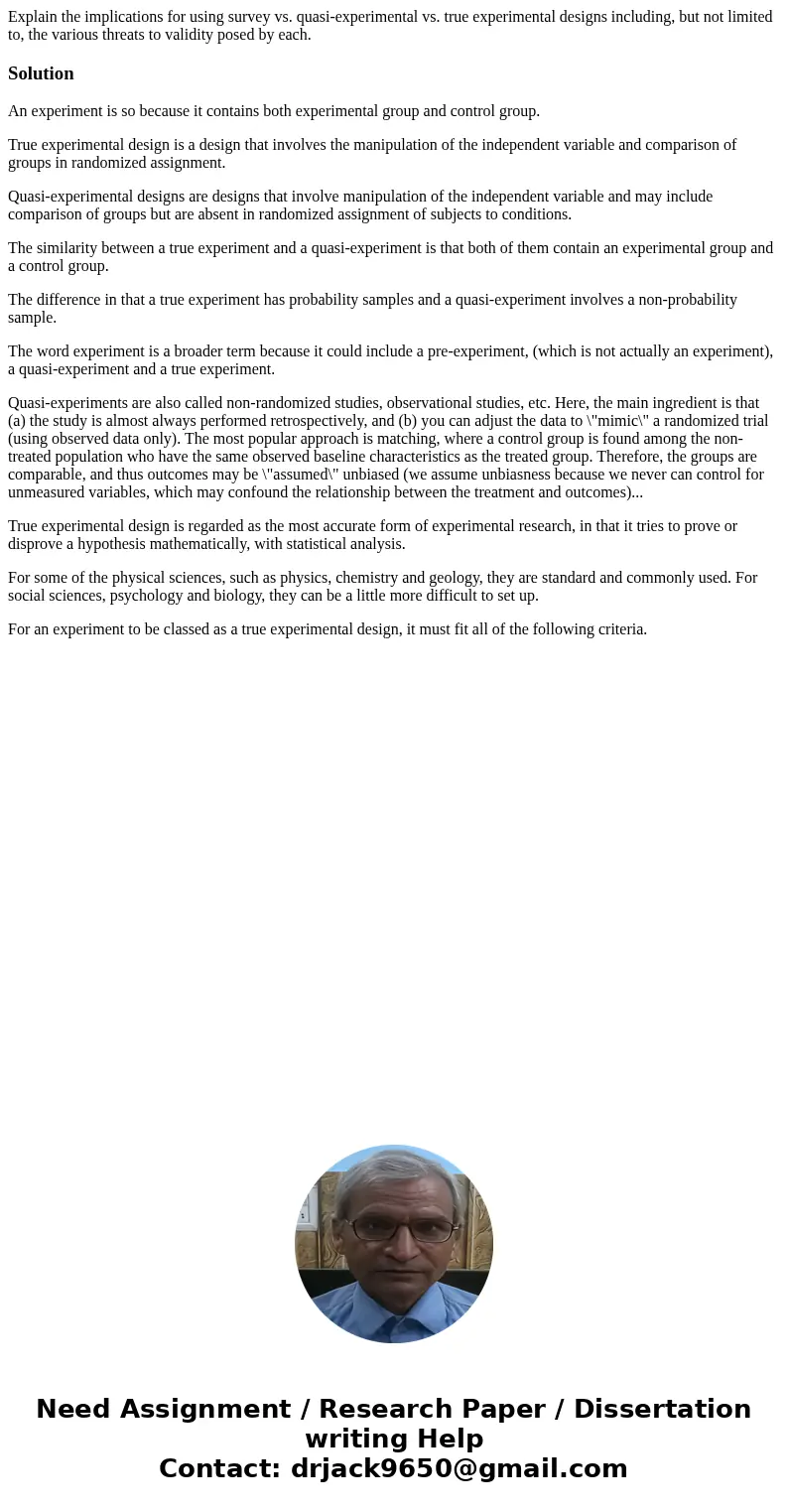Explain the implications for using survey vs quasiexperiment
Explain the implications for using survey vs. quasi-experimental vs. true experimental designs including, but not limited to, the various threats to validity posed by each.
Solution
An experiment is so because it contains both experimental group and control group.
True experimental design is a design that involves the manipulation of the independent variable and comparison of groups in randomized assignment.
Quasi-experimental designs are designs that involve manipulation of the independent variable and may include comparison of groups but are absent in randomized assignment of subjects to conditions.
The similarity between a true experiment and a quasi-experiment is that both of them contain an experimental group and a control group.
The difference in that a true experiment has probability samples and a quasi-experiment involves a non-probability sample.
The word experiment is a broader term because it could include a pre-experiment, (which is not actually an experiment), a quasi-experiment and a true experiment.
Quasi-experiments are also called non-randomized studies, observational studies, etc. Here, the main ingredient is that (a) the study is almost always performed retrospectively, and (b) you can adjust the data to \"mimic\" a randomized trial (using observed data only). The most popular approach is matching, where a control group is found among the non-treated population who have the same observed baseline characteristics as the treated group. Therefore, the groups are comparable, and thus outcomes may be \"assumed\" unbiased (we assume unbiasness because we never can control for unmeasured variables, which may confound the relationship between the treatment and outcomes)...
True experimental design is regarded as the most accurate form of experimental research, in that it tries to prove or disprove a hypothesis mathematically, with statistical analysis.
For some of the physical sciences, such as physics, chemistry and geology, they are standard and commonly used. For social sciences, psychology and biology, they can be a little more difficult to set up.
For an experiment to be classed as a true experimental design, it must fit all of the following criteria.

 Homework Sourse
Homework Sourse